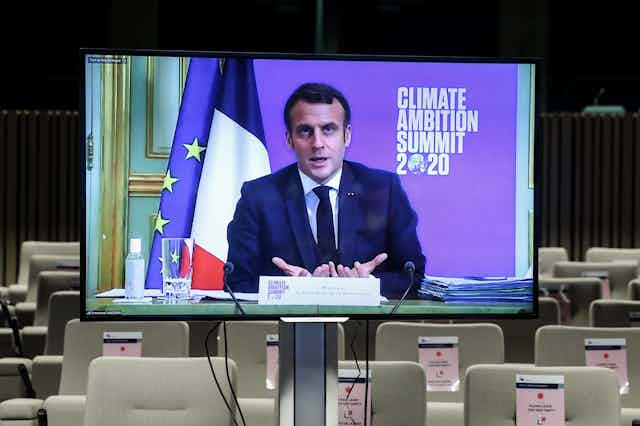Without the pomp and protests of an actual summit, world leaders met online on Saturday December 12 2020 – the fifth anniversary of the Paris Agreement – to talk about action on climate change. The challenge before them was stark: even if all nations kept their original promises in the 2015 agreement, one report warned, the world would still be on track for between three and four degrees of warming, rather than the 1.5°C publicly aspired to.
The meeting was organised by the UK, UN, France, Chile and Italy. As hosts, the UK called for new and more ambitious emissions reduction pledges from attendees, known as nationally determined contributions, alongside long-term strategies that could set each country on a pathway to net zero emissions, help them adapt to climate change and support countries which are particularly vulnerable.
Participants were warned they “must show genuine progress from existing policies and Paris targets”, with “no space for general statements.”
So, how did it all go?
The results
Australian prime minister Scott Morrison supposedly missed the memo on the need to bring bold new commitments to secure a speaking role at the summit, which he was subsequently denied. His federal government currently lags behind the country’s states in setting a date for reaching net zero emissions.

Elsewhere, Denmark declared its intention to phase out new oil and gas exploration, while the UK pledged to stop investing in foreign fossil fuel projects, though it didn’t say when. India announced a target of 450 gigawatts of renewable energy capacity installed by 2030 and Canada promised a CA$170 (US$133) carbon price by 2030. China, currently the world’s largest emitter, offered to cut its emissions 65% by 2030, and expand its forests.
Overall, it was all pretty underwhelming given the scale of the problem. Even UK business secretary Alok Sharma conceded:
Have we done enough to put the world on track to limit warming to 1.5°C and protect people and nature from the effects of climate change? We must be honest with ourselves – the answer to that is currently no.
The summit cycle
While the UK may be desperately trying to show the world (and itself) that its diplomatic heft still matters post-Brexit, for the international community, the Climate Ambition Summit was an attempt to maintain momentum for the postponed climate conference in Glasgow, now scheduled (vaccines willing) for November 2021.
Social movements tend to inspire an emotional cycle of peaks and troughs, which coincide with big marches and rallies. A similar pattern can be traced between global summits and international goodwill for concerted climate action. Summits tend to impose a routine that corrals wayward nations to make more ambitious commitments in the run up to landmark agreements.
Two years out from the 2009 Copenhagen summit, which failed to produce a deal, the UK tried rebranding climate change as a security problem during its presidency of the UN security council, to coax countries hostile to climate action into budging. A year before the Paris Agreement was signed in autumn 2014, a New York summit was marked by the world’s largest climate march at the time. And in 2019, during another UN summit that was supposed to precede a significant global meeting one year later when new nationally determined contributions were due, climate activist Greta Thunberg gave her now famous speech.
Additional summits are there to inject extra urgency, energy or ideas into the process. But the pandemic has robbed this one of its sense of place and urgency, while stopping a growing street movement in its tracks. Many national leaders will be waiting another year to unveil a bolder climate agenda. Why waste new promises now when you can reap the political capital a year later, when people will be paying more attention to the climate and less to COVID-19? For international climate action, the result is more inertia.
What next?
All eyes now turn to Glasgow. By November 2021, we’ll know if US president-elect Joe Biden has managed to push through ambitious climate reforms, something which depends in part on the outcome of two senatorial elections in Georgia.
Read more: Climate change: Joe Biden could ride a wave of international momentum to break deadlock in US
We’ll also see how rebounding economic activity affects emissions of carbon dioxide. Lockdowns during the pandemic caused them to fall by an unprecedented 7% in 2020.
It’s unclear if protest will be possible at the Glasgow summit – states generally prefer to restrict travel to these events, and with COVID-19, they could have the perfect reason to clamp down.
Regardless, the rhythm and predictability that accompanies the summit cycle will go on. Just as children enjoy being read the same bedtime stories, or watching the same films, we find comfort in the repetition and the rehearsing of putative danger, knowing that it will all turn out alright in the end.
Except, of course, fairy tales don’t always have a happy ending, do they?

